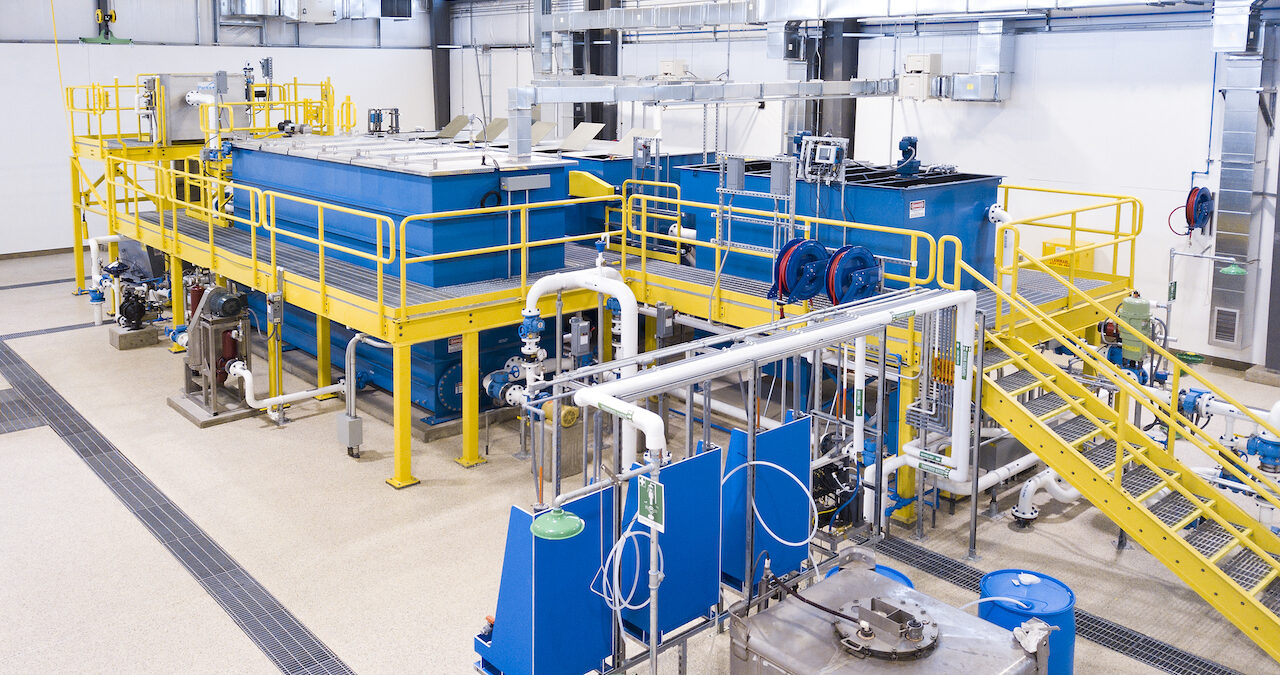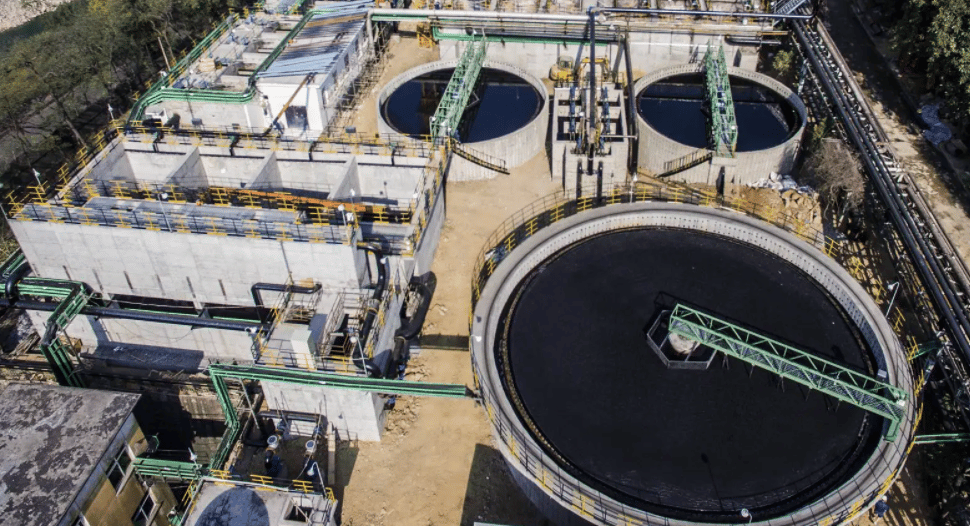Industrial Waste Water Treatment-- Comprehensive Equipments for Wastewater Disposal
Wiki Article
Key Techniques in Industrial Waste Water Treatment Processes
The treatment of industrial wastewater is an essential facet of environmental management, involving a variety of methods designed to mitigate the influence of pollutants. Developments in technologies such as membrane layer filtering and advanced oxidation processes offer cutting-edge solutions for boosting treatment effectiveness.Physical Treatment Methods
How successfully can physical therapy methods attend to the intricacies of industrial wastewater? Physical therapy approaches play a pivotal function in the initial stages of wastewater monitoring, focusing largely on the removal of solids and big particulates. Methods such as flotation protection, sedimentation, and filtration are crucial for decreasing the concentration of suspended solids, therefore boosting the efficiency of subsequent therapy processes.Sedimentation involves the gravitational settling of solids, enabling for the splitting up of heavier products from the wastewater. This method is specifically effective in clearing up water prior to organic or chemical treatments.
Furthermore, flotation protection techniques, which make use of air bubbles to raise suspended solids to the surface area for removal, work in dealing with wastewater with high focus of fats, oils, and greases. In general, physical therapy approaches work as a crucial first action in the extensive administration of commercial wastewater, ensuring that the tons on subsequent therapy phases is lessened and boosting total treatment efficiency.
Chemical Treatment Methods
While physical treatment techniques prepared for effective wastewater management, chemical therapy methods are essential for addressing the extra complicated impurities typically found in commercial effluents. These techniques make use of different chemical representatives to precipitate, counteract, or oxidize damaging substances, making sure a more extensive removal of toxins.
One common technique is coagulation and flocculation, where chemical coagulants such as light weight aluminum sulfate or ferric chloride are contributed to advertise the aggregation of suspended fragments. This process improves solid-liquid splitting up, minimizing turbidity and enhancing water high quality. Additionally, neutralization procedures are used to change the pH of wastewater, making use of acids or bases to counteract acidic or alkaline streams, specifically.
Oxidation-reduction responses play an important function in degrading natural impurities and microorganisms. Chemical oxidants like hydrogen, chlorine, or ozone peroxide are made use of to damage down intricate organic compounds, making them much less harmful or more biodegradable. In addition, advanced oxidation procedures (AOPs) integrate multiple oxidation techniques to boost pollutant elimination performance.
Organic Treatment Processes
The effectiveness of wastewater treatment is significantly enhanced by biological treatment processes, which harness the all-natural metabolic tasks of microbes to decompose organic matter and remove toxins. Industrial Waste Water Treatment. These procedures primarily entail cardio and anaerobic food digestion, each tailored for specific sorts of wastewaterCardio therapy processes use oxygen to support microbial growth, advertising the break down of organic contaminants into co2 and water. Usual techniques include activated sludge systems, where oygenation containers promote the blending of wastewater with bacteria, and trickling filters, which urge biofilm development on media surfaces.
Conversely, anaerobic therapy processes take place in the lack of oxygen, making use of anaerobic germs to break down organic issue, resulting in biogas production, a renewable resource source. Anaerobic digesters are commonly used in industrial settings for this purpose, successfully lowering the volume of view website sludge while creating useful biogas.
The selection of an organic treatment approach depends upon wastewater qualities, therapy objectives, and regulative standards. The assimilation of biological procedures in wastewater treatment not just improves toxin removal performance yet also advertises sustainability by reducing chemical use and supporting source recuperation.
Advanced Oxidation Processes

Typical AOP strategies include Fenton's reagent, ozonation, and photocatalysis. Fenton's reagent, a combination of hydrogen peroxide and ferrous iron, catalyzes the formation of hydroxyl radicals, this article making it efficient for dealing with wastewater having phenolic substances and other stubborn materials.
AOPs provide a number of benefits, consisting of reduced sludge production and the capability to deal with wastewater with high focus of natural pollutants. The implementation of AOPs requires cautious consideration of operational specifications and cost-effectiveness, making sure that these innovative methods are suitably incorporated right into existing wastewater therapy systems.
Membrane Filtering Technologies

Microfiltration is reliable for removing suspended solids and germs, while ultrafiltration targets smaller sized natural particles and infections. Nanofiltration bridges the space in between ultrafiltration and turn around osmosis, effectively eliminating divalent ions and natural substances. Reverse osmosis supplies the highest degree of filtration, made use of primarily for desalination and removing mono-valent ions.
Membrane technologies provide various advantages, including low energy consumption contrasted to standard therapy techniques, modular style for scalability, and the capacity for water healing and reuse. Obstacles such as membrane layer fouling and the requirement for regular maintenance have to be resolved to make sure system effectiveness. In general, membrane purification modern technologies stand for a crucial component of contemporary commercial wastewater treatment techniques, advertising sustainability and source preservation in water management.
Conclusion
In verdict, commercial wastewater therapy uses a varied array of strategies, including physical, chemical, biological, and progressed techniques. Proceeded innovations in these techniques will better enhance the effectiveness and performance of wastewater therapy processes in commercial setups.The therapy of commercial wastewater is an essential aspect of environmental administration, entailing a range of techniques created to mitigate the influence of pollutants.Just how effectively can physical treatment approaches deal with the complexities of commercial wastewater?Advanced oxidation procedures (AOPs) represent an innovative strategy in commercial wastewater therapy, developed to properly break down natural pollutants that are usually resistant to traditional treatment techniques (Industrial Waste Water Treatment).In verdict, commercial wastewater therapy uses a varied selection of techniques, consisting of physical, chemical, biological, and advanced methods. Proceeded advancements in these approaches will certainly better improve the effectiveness and efficiency of wastewater treatment procedures in commercial settings
Report this wiki page